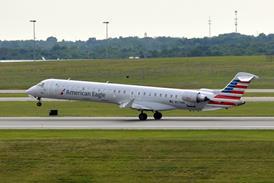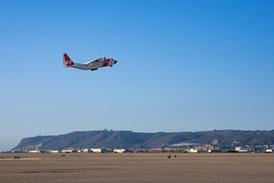ALAN DRON
The long-awaited first member of a new family of Falcon business jets was unveiled yesterday at the show by Dassault Aviation. Dassault also announced a letter of intent from United Airlines' parent company for up to 100 current Falcons, to kick-start United's new existence as a business jet operator. The new Falcon, the FNX, will be a three-engine, 10,500km (5,700nm) range machine of completely new design, although bearing a marked family resemblance to earlier Falcon tri-jets, including the distinctive Dassault anhedral on the tailplane. With a planned maximum speed of Mach 0.9, it will feature what Dassault chairman and chief executive Charles Edelstenne calls "breakthrough aerodynamics" that he says will yield improvements of 30% in lift/drag ratio over existing Falcons. The wing has noticeably sharper sweep and higher aspect ratio compared with the existing Falcon wing. Where the wingspan of the current Falcon 900EX is 19.33m (63ft), that of the FNX is 23.19m. The French manufacturer is considering the Honeywell AS 905 and Pratt & Whitney Canada PW 306 as powerplants, says Edelstenne. Either will give a combined thrust of more than 18,000lb (80.1kN), says the CEO, and continue the Falcons' ability to get in and out of demanding, hot-and-high airfields. The aircraft will have a fly-by-wire system, while the cabin will be as wide as the 900EX's, but some 20% longer. Edelstenne denied that the Mach 0.9 FNX would struggle to attract time-conscious customers being wooed by Boeing's planned Sonic Cruiser, which is due to fly at Mach 0.95. "I think that's a red herring. The two to two-and-a-half hours you spend embarking and disembarking [on an airliner] doesn¹t come into play on a business aircraft." Dassault "didn't want to move into the transonic domain. You either travel at Mach 0.9 or you're into the supersonic domain." Vice-chairman Bruno Revellin-Falcoz says several aerodynamic routes had been tried during design of the FNX, before the current configuration was decided upon. He declines to put a price on the new aircraft.
Source: Flight Daily News























